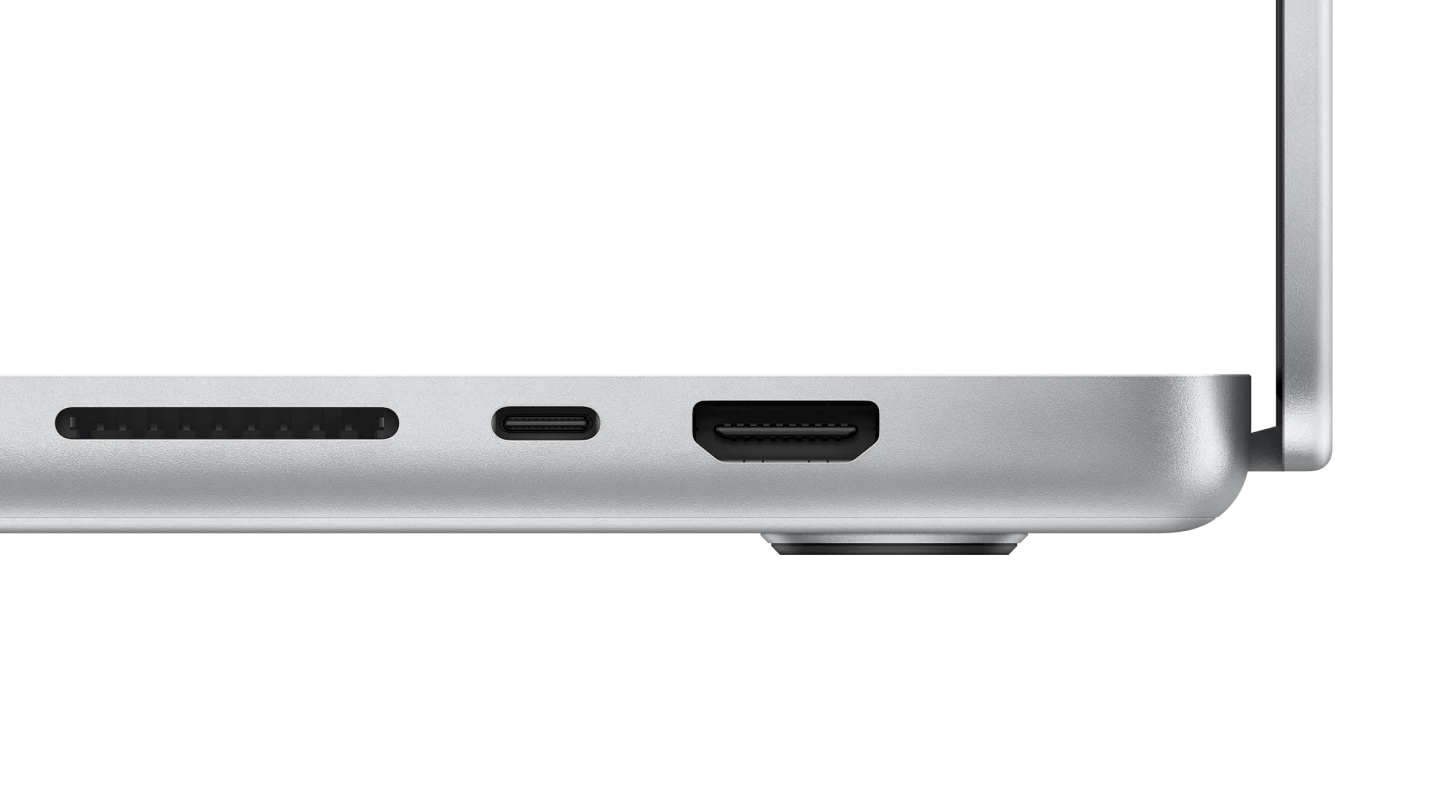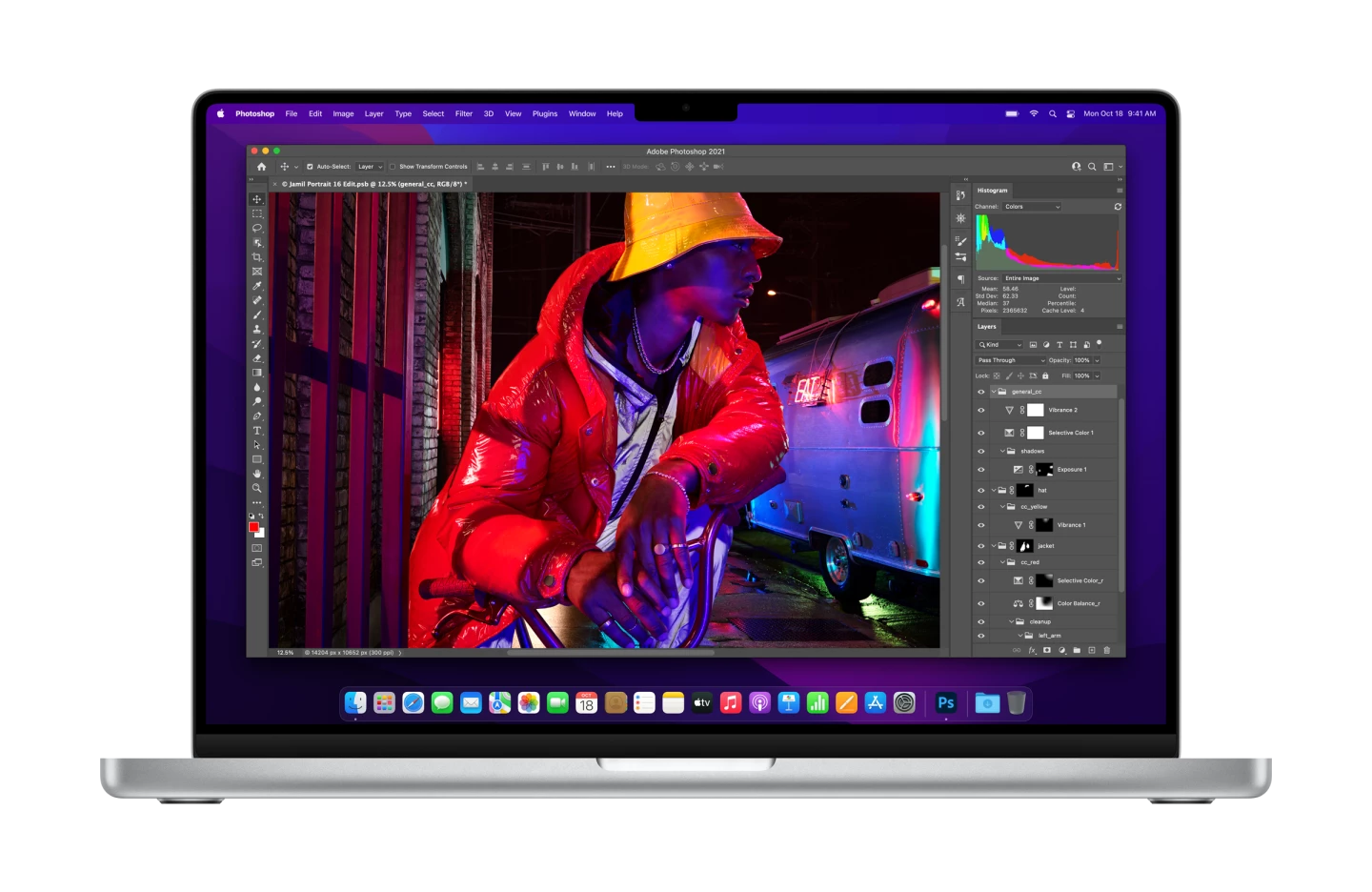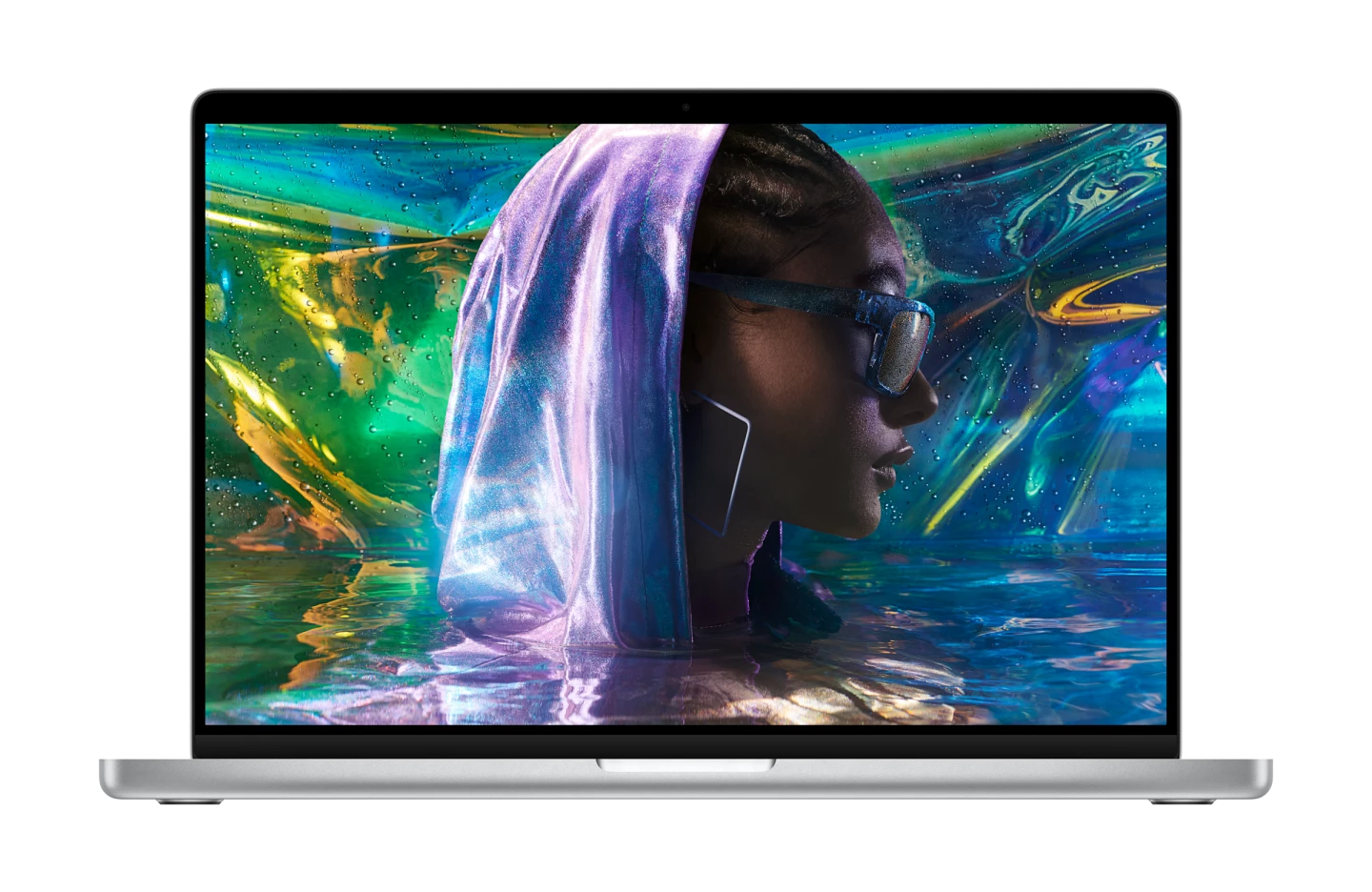Apple has unveiled its new 14- and 16-inch MacBook Pros, taking some huge steps forward as well as some very welcome steps back. It seems this US$2 trillion behemoth has done the last thing anyone expected – and actually listened to its customers.
Often in the past, it's been a story of Apple giveth, then Apple taketh away. Headphone jacks, MagSafe chargers, HDMI ports, SD card readers ... Apple has frequently leveraged its market dominance in brutal ways, yanking useful features away and turning a deaf ear to the plaintive cries of its customers. Apple believed it was dragging its market kicking and screaming into a better future, but users bristled as features they used daily were removed and sold back to them in an endless array of annoying dongles.
In 2021's new MacBook Pro range, Apple giveth back again, and the creatives that formed the backbone of the company's early support are going to be delighted.

The new MacBook Pros ditch the largely uninspiring touchbar over the keyboard, and bring back a proper HDMI port and an SD card reader. You can still charge them through their three USB-C Thunderbolt 4 ports if you like, but the much-loved MagSafe charger is back as well, in a new third-generation form that can push more power. Better still, the MagSafe charge cable plugs into the power brick, so you can replace the cord without needing a whole new charger. That's about as close as Apple comes to a repair-friendly device these days, and it's cause for celebration.
The welcome return of usable ports might be the first thing that jumps out to us, but the new laptops take many steps forward where you'd expect them to as well. The new Pro books are massively more powerful than anything Apple's made in the past, rocking your choice of brand-new M1 Pro or M1 Max chips with up to 10 cores, up to 64GB of RAM, up to 8 TB of onboard storage, a brand new "Liquid Retina" XDR display, upgraded audio and up to a monster 21 hours of battery life.
The new chips look seriously impressive. Available in both 14 and 16-inch laptops, the M1 Pro and Max SoCs put a focus on intelligent accelerated performance and energy saving, combining the CPU, GPU, input/output and neural engine into a single system with unified memory. That means the central and graphics processors, for example, share the same "pool" of memory, eliminating the need to copy information between separate RAM structures.

This is key to both speed and efficiency, and Apple says the chips will be so miserly with power that the new fan systems "never turn on for many tasks you do every day." When it does, it'll push 50 percent more air than the outgoing model.
The M1 Pro supports up to 32GB of RAM, transferring data in and out of memory at a huge 200 GB per second. The M1 Max doubles that to 64 GB and 400 GB/sec bandwidth. Both have up to 10 processor cores, including two high-efficiency cores that draw one-tenth the power. Both have a 16-core neural engine, while the Pro offers up to a 16-core GPU and the Max offers up to a 32-core GPU. The end result, says Apple, offers 1.7 times the performance of "the latest 8-core PC laptop chip" at 70 percent less power, with graphics capabilities very close to a high-end PC laptop graphics card while using about a third of the power.
To give you some idea of the performance here, the M1 Max claims to be able to support four external displays, while playing seven simultaneous streams of 8K video. It'll render 4K video some 13.4 ties faster than the outgoing 13-inch MacBook Pro, while the M1 Pro will do it just 9.2 times faster. Even the hard drives are speed demons – including a top-of-the-line 8 TB solid state drive that transfers data at up to 7.4 GB/sec.

The new "Liquid Retina XDR" screens, says Apple, are the best ever to grace a laptop, with million-to-one contrast ratios, "extreme dynamic range," factory-calibrated pro reference modes for HDR color grading, photography, design and print, and super-fluid 120 Hz refresh rates with "ProMotion" adaptive frame rate technology. This, of course, can be locked into fixed refresh rates for video editing. Resolution for the 16-inch MBP will be 3456 x 2234, and the 14-inch will be 3024 x 1964.
The in-built camera gets double the resolution at 1080p, and performs twice as well in poor light. The in-built mics drop the noise floor by 60 percent and use beamforming technology to capture your voice more clearly than ever. The six-speaker in-built sound system delivers 80 percent more bass and pushes notes half an octave lower than before, while cleaning up the high end with new high-performance tweeters – and it's capable of delivering spatial 3D audio, compatible with Dolby Atmos.
These laptops are absolute beasts, and Apple sure knows how to charge for 'em. The 14-inch starts at US$1,999, the 16-inch starts at $2,499, a 16-inch with an M1 Max chip starts at $3,499, and if you bump the memory up to 64 GB and option up the 8 TB hard drive, you're looking at a $6,099 laptop. They're available for order now, with deliveries starting within a week.
Check out a video below.
Product page: Apple MacBook Pro












